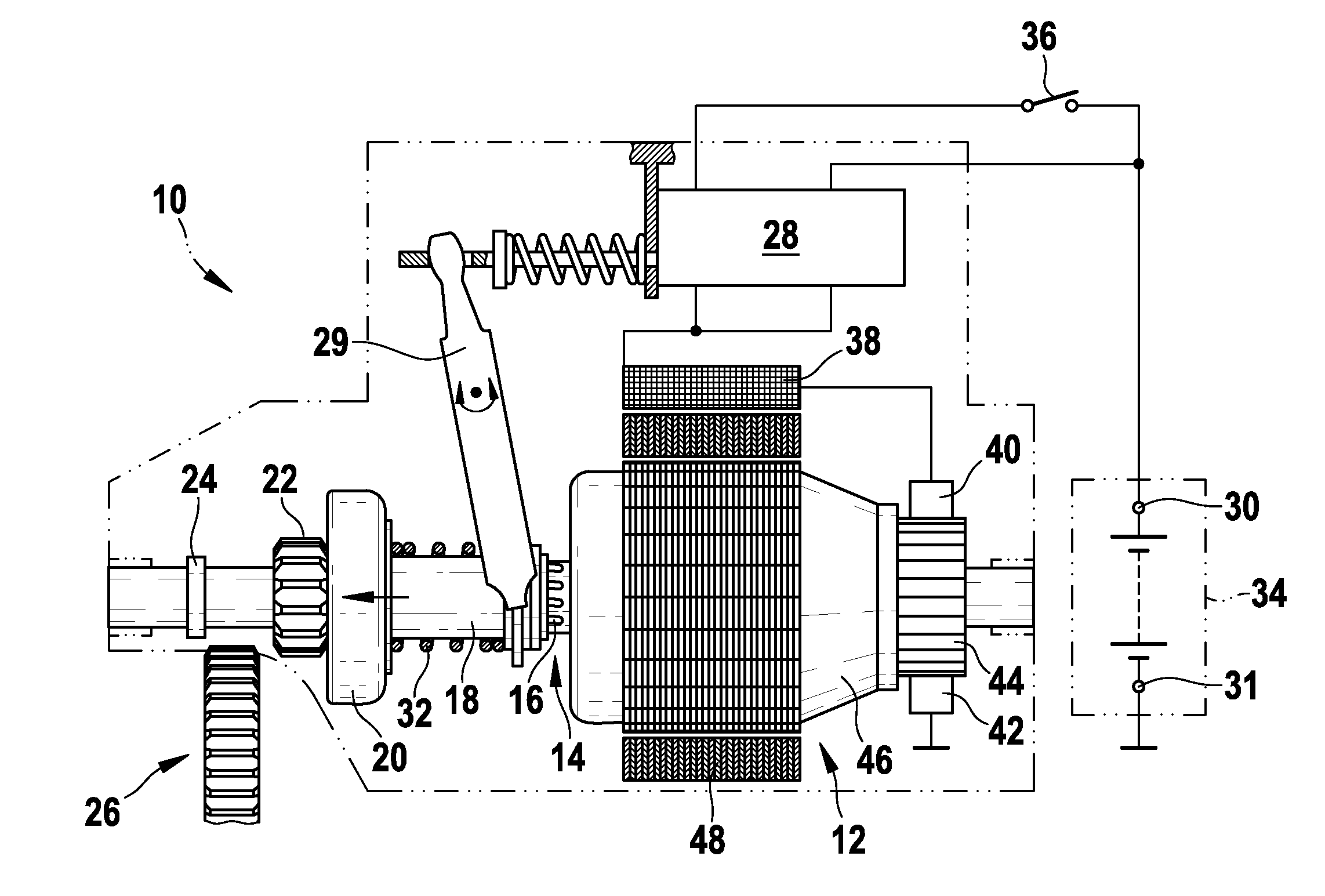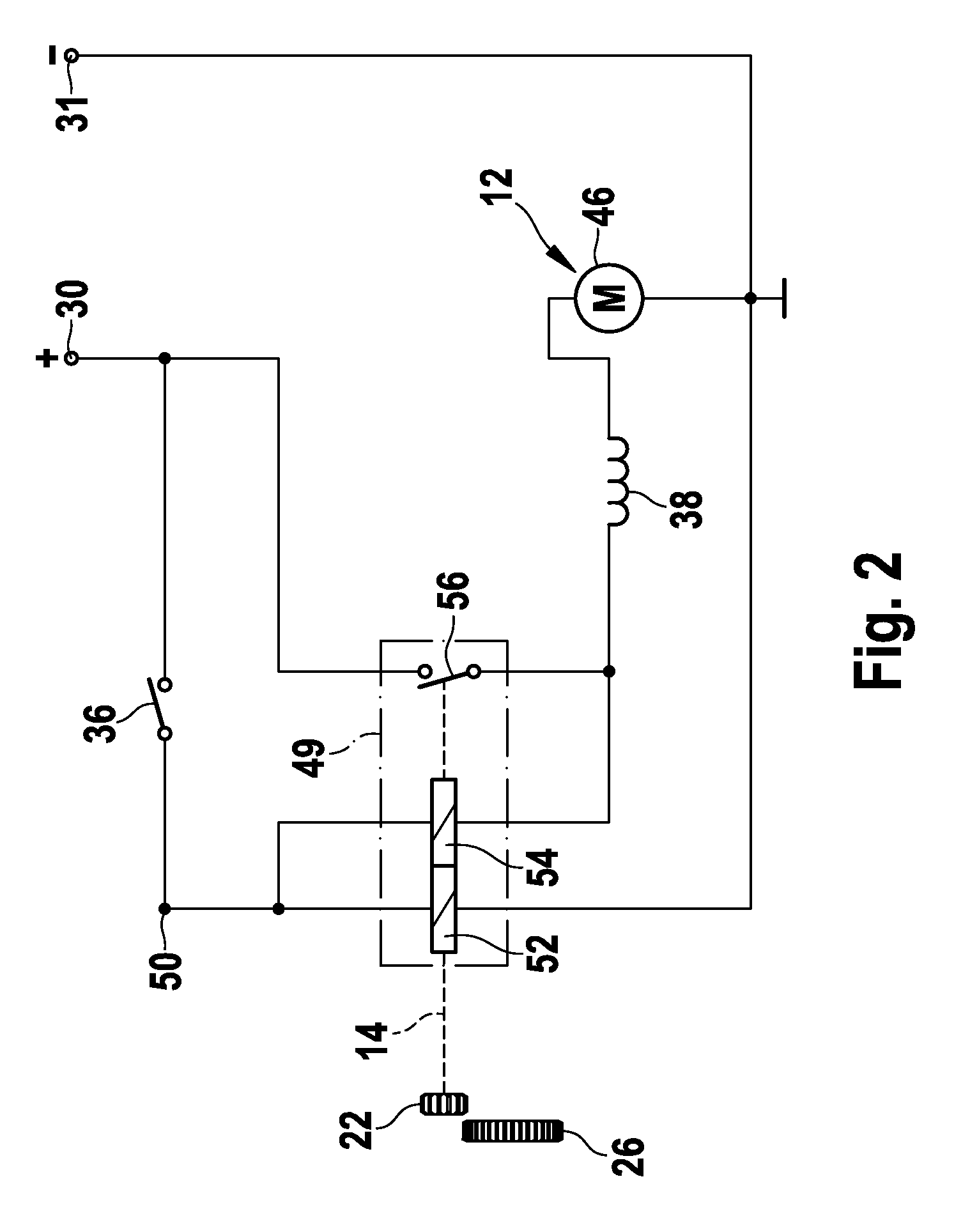Starter for an internal combustion engine
a technology of an internal combustion engine and a starter, which is applied in the direction of engine starters, machines/engines, electric generator control, etc., can solve the problems of high dynamic response high contact wear, and difficult working conditions of the switching process, so as to avoid reactions
- Summary
- Abstract
- Description
- Claims
- Application Information
AI Technical Summary
Benefits of technology
Problems solved by technology
Method used
Image
Examples
Embodiment Construction
[0015]FIG. 1 schematically illustrates the mechanical design of the starter 10 according to the invention, in the form of a pre-engaged Bendix starter for an internal combustion engine. The starter 10 has a starter motor 12 whose output drive shaft 14 has a steep-pitched thread 16 which interacts with a corresponding female thread in a driver shaft 18. Alternatively, the output drive shaft 14 is driven via an epicyclic gearbox, which is connected in between, but is not illustrated. The driver shaft 18 is firmly connected to the outer ring of a freewheeling ring 20, whose inner ring is fitted with a pinion 22. The pinion 22 and the freewheeling mechanism 20 are mounted on the output drive shaft 14 such that they can move axially as far as a stop 24. The pinion 22 in this case engages in a toothed rim 26 of an internal combustion engine, which is not illustrated. The axial movement takes place with the aid of a relay arrangement 28, which is illustrated in detail in the following figu...
PUM
 Login to View More
Login to View More Abstract
Description
Claims
Application Information
 Login to View More
Login to View More - R&D
- Intellectual Property
- Life Sciences
- Materials
- Tech Scout
- Unparalleled Data Quality
- Higher Quality Content
- 60% Fewer Hallucinations
Browse by: Latest US Patents, China's latest patents, Technical Efficacy Thesaurus, Application Domain, Technology Topic, Popular Technical Reports.
© 2025 PatSnap. All rights reserved.Legal|Privacy policy|Modern Slavery Act Transparency Statement|Sitemap|About US| Contact US: help@patsnap.com



